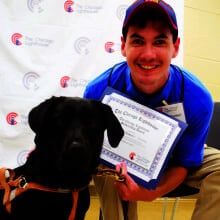How Can The Internet Be Made More Accessible To Everyone?
The Americans with Disabilities Act has enabled individuals with disabilities to live more independent and inclusive lives. Curb cuts and ramps make it easier for people with mobility impairments to access public places, while audio announcements allow those of us with vision loss to travel independently. Today, the internet has almost become a necessity for people with disabilities. Since the ADA was signed into law in 1990, it currently does not include accessibility standards for the worldwide web.
Many advocates are bringing this pressing issue to the attention of the general public. Attorneys representing people with a variety of disabilities – including vision loss and hearing impairments – say that realty websites need to be made more accessible. While there are currently no website accessibility standards in the United States, the Web Content Accessibility Guidelines provide four key principles. When implemented correctly, they can help make websites usable for everyone. Developed by the World Wide Web Consortium, the WCAG is a document detailing internet accessibility standards intended for users throughout the world. The following is a basic overview of each principal from the WGCA 2.0 website:
- Content must be perceivable. This includes providing features like alternative text descriptions for pictures as well as closed captioning and audio description for multimedia content. It is also important to ensure that content can be accessed with assistive technology, and that it can be easily seen and heard.
- Content must be operable. All website functionality should be possible by using a keyboard and users should be provided with enough time to read and interact with content. This is particularly important for individuals who cannot see or don’t have the dexterity to use a mouse.
- Content must be understandable. Text and other media should be easy to comprehend by everyone, including individuals with various types of disabilities. Websites should also be in an easy to follow and predictable structure. Developers should also provide labels or instructions when steps are required to interact with content.
- Content should be robust. Technology is constantly evolving, and websites should be compatible with current and future tools. This is particularly important with today’s technologies and different ways of accessing the web. Of course, this includes making sure that both mainstream and assistive technologies are as compatible as possible.
More details on how to make websites accessible to people with disabilities can be found on the WCAG website. This page provides specific requirements and helpful information for developers on how to incorporate them into their websites.
Internet accessibility is important for people with vision loss as well as for those with other types of disabilities. The numerous intricacies of the World Wide Web have created many accessibility barriers, and we are all still learning how to break them down. The information from the WCAG can be a good tool for individuals, organizations and governments interested in setting accessibility standards for their webpages. We will take a more in depth look at how the United States and other countries can better adopt and implement such standards in future posts.





